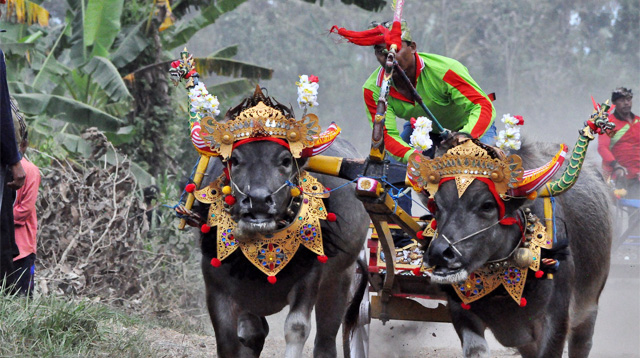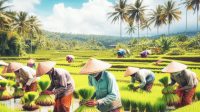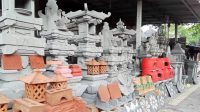- SEVERAL farmers still happily take advantage of the power of buffaloes to cultivate their paddy fields up to these days
- Other than for cultivating their land, farmers also put their buffaloes into race after harvest season. At the same time, it becomes an attraction to others and visitors
Jembrana District in Westernmost Bali has a unique agrarian cultural tradition called makepung or buffalo races. Due to the popularity of such attraction in Jembrana, this area is also better known as the Bumi Makepung or Buffalo Race Region.
In this race, a pair of buffalo are driven and ridden by a jockey who whips his race animals eagerly to win. Regularly, this makepung event is commonly held in July to November each year to coincide with the rice harvest season, so that it becomes an interesting tourist attraction.
For tourists, this event becomes very attractive. While for farmers, they must choose superior buffalo, maintain and treat differently and specifically like a race horse. In farmers’ daily activities, the buffaloes are also used to plow the fields.
Literally, the word makepung in Balinese means ‘chasing.’ This agrarian cultural tradition has developed in Jembrana district since the 1930s, and continues to grow to these days. The jockeys in the style of Balinese royal warriors of ancient times are wearing a headband, shawl, sling, trousers barefoot and the sword tucked into the waist along with other accessories.
Before joining the race, buffaloes are given food and special ingredients so that they have extra stamina. Thus, they can be strong anough in the races. Even before the competition begins, buffalo owners perform special rituals.
It is said that the farmers relaxed after working together to finish plowing their paddy fields. Idly, they pitted their buffaloes to race by pulling a plow in muddy paddy fields. Well, this event actually became an interesting spectacle to their friends and unavoidably attracted many followers.
Due to the increasing number of participants, this event was routinely held in the 1960s. But this race was held on the road of rice fields that are not muddy. The buffaloes were embellished beautifully to make them look manly and full of charm.
In an effort to preserve the makepung tradition, the Jembrana district government specifically set up an annual agenda related to makepung such as holding the Regent’s Cup and Jembrana Cup as an annual agenda.
Indeed, a jockey in this race must have great courage because the risk is high because the jockey should be able to maintain balance so as not to crash. In the races, the coachman doesn’t use an ordinary whip, but uses a nailed whip in spurring his buffaloes, and this looks like a bit extreme. Therefore, the buffalo will look bloody when the race is over. Nevertheless, the owner assures that buffalo’s wounds can heal quickly with the spread of traditional medicine on the buffalo’s body. The healing of using nailed whip will make faster rather than using ordinary whip.
There are two groups that compete in this event. West Ijogading group has green flag, while East Ijogading group has red flag. The division of this group is based on the flow of the Ijogading River which divides the capital of the Jembrana district.
From these races, there are two buffalo races held lively, namely the Regent Cup in August and the Governor Cup in November. However, during the period of July-October 2020, there are not any tourism events as on the website of Jembrana District government. No less interesting is that in the race, the buffaloes and carts are decorated attractively with a variety of traditional Balinese ornaments and accessories. The jockeys also use traditional Balinese clothes.
The winner in this buffalo race is not determined by who is the fastest to reach the finish line but precisely determined by how wide the distance that can be made by competing participants. If the participant in front can widen the distance of more than 10 meters from the participant in the back, the participant in front comes out as the winner.
Conversely, if the participant in the back can narrow the distance less than 10 meters from the participant in front of him, then the participant in the back comes out as the winner. This is unique in the buffalo race in terms of determining the winner. The track is from the ground and shaped “U” with a length of 1-2 kilometers.
References:
https://id.wikipedia.org/wiki/Mekepung
https://wonderful.jembrana.go.id/# (opened on July 13, 2020)











